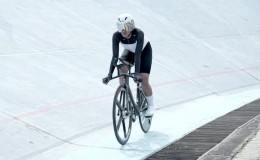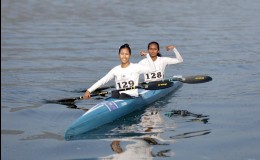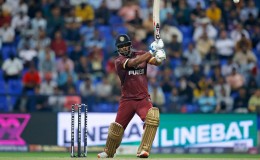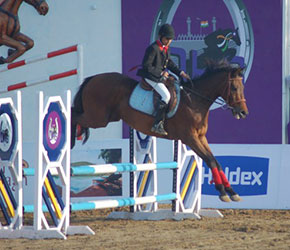 Roshan Sodhi, secretary of the Delhi Horse Show, is a woman with a difference. She is humble, modest, polite and most importantly a passionate horse rider. She along with her husband has done a fabulous job in keeping the DHS alive. Horse riding is in her genes, and from generations, they have been the admirer of this sport. Riding is her passion, especially come the name of ‘show jumping’ and she is in on cloud nine. She is the first women national champion on Army horse and her daughter Anisha Sodhi is the first civilian rider to be national champion on her own horse.
Roshan Sodhi, secretary of the Delhi Horse Show, is a woman with a difference. She is humble, modest, polite and most importantly a passionate horse rider. She along with her husband has done a fabulous job in keeping the DHS alive. Horse riding is in her genes, and from generations, they have been the admirer of this sport. Riding is her passion, especially come the name of ‘show jumping’ and she is in on cloud nine. She is the first women national champion on Army horse and her daughter Anisha Sodhi is the first civilian rider to be national champion on her own horse.
While recalling about this equestrian event, she goes back to the past and briefs, “The Delhi horse show was first organised by the British Indian Army in the 1930’s. Post independence, it shifted to Red Fort and attracted a huge crowd as it was in the vicinity of Chandani Chowk and other parts of old Delhi.”
She further remembers how the crowd used to go mad about this event. “In 1980, when the Red Fort grand was cut into by the widening road, the show moved to the Jaipur Polo Ground, but it had nowhere to go after that,” she reminisces.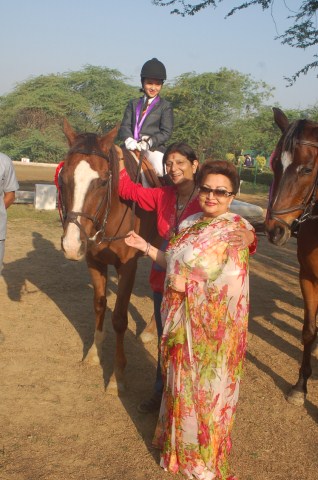
On being asked about the poor crowd from then (1986), she blames the accessibility factors but reminds that how civilian participation has increased, which was earlier dominated only by the elite and the Army. “Participation has increased in all the events. It has increased by many folds. From 9 to 10 participants in 12-14 years category in 1986, it has gone up to 70 to 75 in this edition. The total entry has rose up to around 3000,” she informs.
When asked about her journey so far and how she looks at this event, 10 years from now; she says her idea was to bring more civilian in to this game and she has been successful in doing so to an extent. “But for better participation, we need media attention, which this extraordinary game is not enjoying. I would also like to improve the standard of senior athletes as they have to do the maximum and most serious stunts,” she quips.
She feels very happy and elevated at the reason of out competing men in this game, as this is the only game, which does not have men women classification and it gives her an extra opportunity to prove her worth.
About sponsorships she says it is quite difficult to manage sponsors in a sport like the horse show, which is not, yet so popular in country like India. But she has been successful in getting good sponsors through a very close friend DC Anand, the owner of Anand Group, who has been extensively helping her in successful completion of this game since 1986.
Three-and-half-year-old Vivaan Budgujjar has won bronze in children lime and spoon group III of the Delhi Horse Show organised by the Army Polo and Riding Club. He is small and smart boy who looks lost in his own world while sitting on the horse.
A happy and proud Kumkum Budgujjar, mother of the young horse rider says, he loves horse riding and looks very passionate about it. “Vivaan was put on horse’s back at a very early age of 11months by his aunty Swati Bajjar, and from there onwards he developed this interest. Swati Bajjar herself along with her husband owns a horse riding school and their son Ninand Bajjar has already won silver in the same category in the last edition of this equestrian event,” Kumkum informs.
The entire family it seems is a great admirer of this game, which can be clearly reflected in their children success in this discipline of the game.
Kartar Singh Bajjar, grandfather (maternal), is very happy about his grandchild feat, and says he has always promoted and encouraged sports in his family and feels very proud on his grandchild achievement. On being asked about the danger, this game holds, especially involving small child like Vivaan, he says it is part and parcel of every game and he is aware of the fear factor. “But one cannot seize one’s childhood, thinking useless things like this,” he asserts.
Nirvendra Singh Badauria, an Army employee from Uttar Pardesh, is a busy man. He is working as a horse handler with 61 Cavalry Regiment for the past 11 years. He along with his colleague, who is with the Delhi Horse Show team, presently moves throughout the year helping his regiment. Already visited Mumbai for the same and now they are planning to visit Bangalore for Banglore Horse show, which kicks start in May.
They do not have any equestrian event from May to September, but they won’t be having any respite as they would be busy training new horses that are mostly supplied from the Saharanpur, Babugadh and Hempur (Muradabad) Army Depot. On being asked why they do not organize any such events in these months, he modestly explains “During summer, because of the heat, horses are tough to handle and may pose danger for both athlete and training staffs. Initially I had problem in handling the horses but now I am very comfortable with the job.”
He looks very busy and passionate but is satisfied with his job. He says Army was always his priority and is very happy with his work irrespective of position.
A good rider is like an academician…
GS Shekhawat, 1994th batch of 61 Cavalry Regiment understands the game and essentially the animal which is an integral part of the competition. He says he never had any problem while training these horses. “Rather I mix with them very comfortably. I know almost everything about the game and animal.”
He says training a horse is not tough, especially when you read their nature properly. “Once you read them, try to find out its potential and what it needs from you. Then train and use them accordingly. While training I have already used 4-5 horses and none was tough to understand,” he says, adding that like an academician one has to do extensive research to master a horse. “One can be a very good rider but one can never claim himself to be 100% rider, as there are none and there is no loss of honor in accepting that,” he says, informing that Indian defence forces uses two types of horses -- namely half breed (Indian) and Hanoverian (crossed with foreign breeds).






